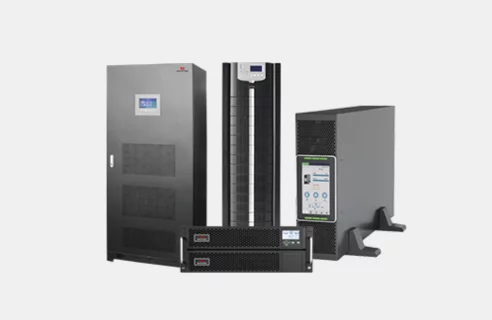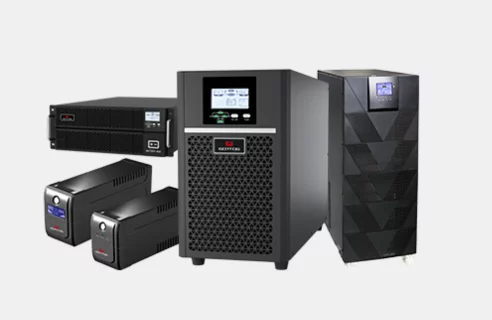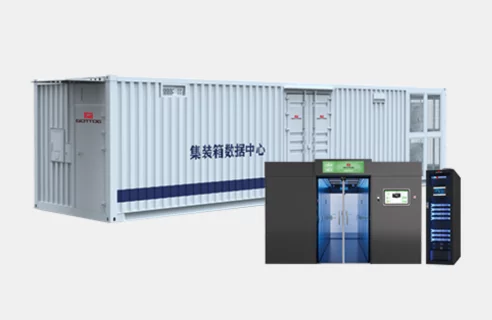Understanding the Core Concepts
At the heart of N+X redundancy are two fundamental variables that define system resilience:
- N represents the minimum number of power modules required to support your critical operational load
- X denotes the additional modules providing redundant capacity for fault tolerance
In practical terms, a system with N+X configuration contains N+X total power modules, where only N modules are needed to carry the full load, and X modules remain available as immediate backups.
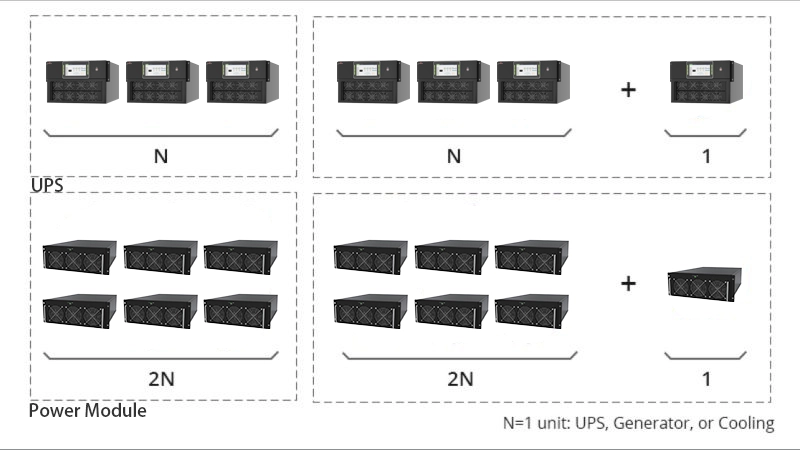
Practical Implementation
Consider an 80kW IT load supported by 25kW power modules:
- N = 4 modules (4 × 25kW = 100kW capacity)
- With X=1 redundancy, the system operates with 5 total modules
- The configuration maintains 100kW of active capacity while keeping one 25kW module in ready reserve
The Fault Tolerance Mechanism
Modular UPS systems implement N+X redundancy through sophisticated operational principles:
- Intelligent Load Distribution: The system controller dynamically allocates load across all active modules
- Hot-Standby Redundancy: Backup modules remain synchronized and ready for immediate activation
- Millisecond-Level Response: Failed modules are automatically bypassed with zero transfer time
- True Online Maintenance: Faulty modules can be replaced during operation without service interruption
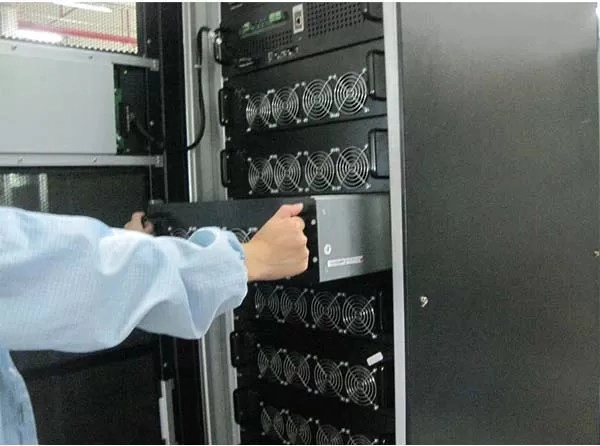
Comparative Advantage Over Traditional Architectures
When evaluated against conventional 1+1 parallel systems, N+X demonstrates distinct advantages:
| Feature Comparison | Modular UPS (N+X) | Traditional Tower UPS (1+1) |
|---|---|---|
| Redundancy Granularity & Architecture | Module-level redundancy with resource pooling within a single system | System-level redundancy with two independent parallel systems |
| Efficiency & Operational Cost | Intelligent module sleep mode maintains peak efficiency across load ranges, significant power savings | Both systems may operate in inefficient zones at low loads, substantial energy waste |
| Expansion Flexibility | Online seamless capacity expansion through module addition, zero impact on existing load | Requires complete system overhaul: new units, rewiring, potential service interruption |
| Maintenance & Repair | Hot-swappable modules, field-replaceable by onsite staff (<5 minutes), minimal MTTR | Requires manufacturer specialist intervention, hours or days of repair time, extended risk exposure |
| Footprint | High power density design, compact form factor saves valuable space | Requires space for two complete independent systems, larger footprint |
| Maintainability & Management | Granular visibility into each module’s status, load, and temperature, predictive maintenance | System-level monitoring only, complex internal diagnostics, “black box” approach |
| Lifecycle & Adaptability | Independent upgrade paths for power modules and control systems, extended system lifespan | Technology locked at time of purchase, complete replacement required for upgrades |
Strategic Implementation Considerations
Selecting the appropriate redundancy level requires careful analysis:
X=1 Configuration
- Protects against single module failure
- Suitable for most commercial applications
- Provides optimal cost-to-benefit ratio
X=2 Configuration
- Maintains operation through multiple concurrent failures
- Essential for financial and telecommunications infrastructure
- Supports maintenance activities without reducing protection
Higher Redundancy Levels
- Reserved for mission-critical applications
- Provides maximum fault tolerance
- Justified by extreme availability requirements
The decision framework should evaluate the “cost of interruption” against the “cost of protection.” For most organizations, the business impact of downtime significantly outweighs the incremental investment in additional redundancy.
Conclusión
N+X redundancy represents more than a technical specification—it embodies a strategic approach to power infrastructure design. By implementing module-level fault tolerance, organizations can achieve unprecedented levels of availability while optimizing capital and operational expenditures.
The comprehensive comparison demonstrates that modular UPS architecture fundamentally transforms power protection from a static, over-provisioned solution to a dynamic, efficient system that grows with your business. The granular redundancy, combined with operational flexibility and maintenance advantages, positions modular UPS as the clear choice for modern digital infrastructure.
The fundamental question for any organization isn’t whether to implement redundancy, but rather determining the optimal balance between N and X that aligns with their specific operational requirements and risk tolerance. In an era where business continuity directly correlates with business success, N+X redundancy provides the mathematical framework for building truly resilient power infrastructure.


